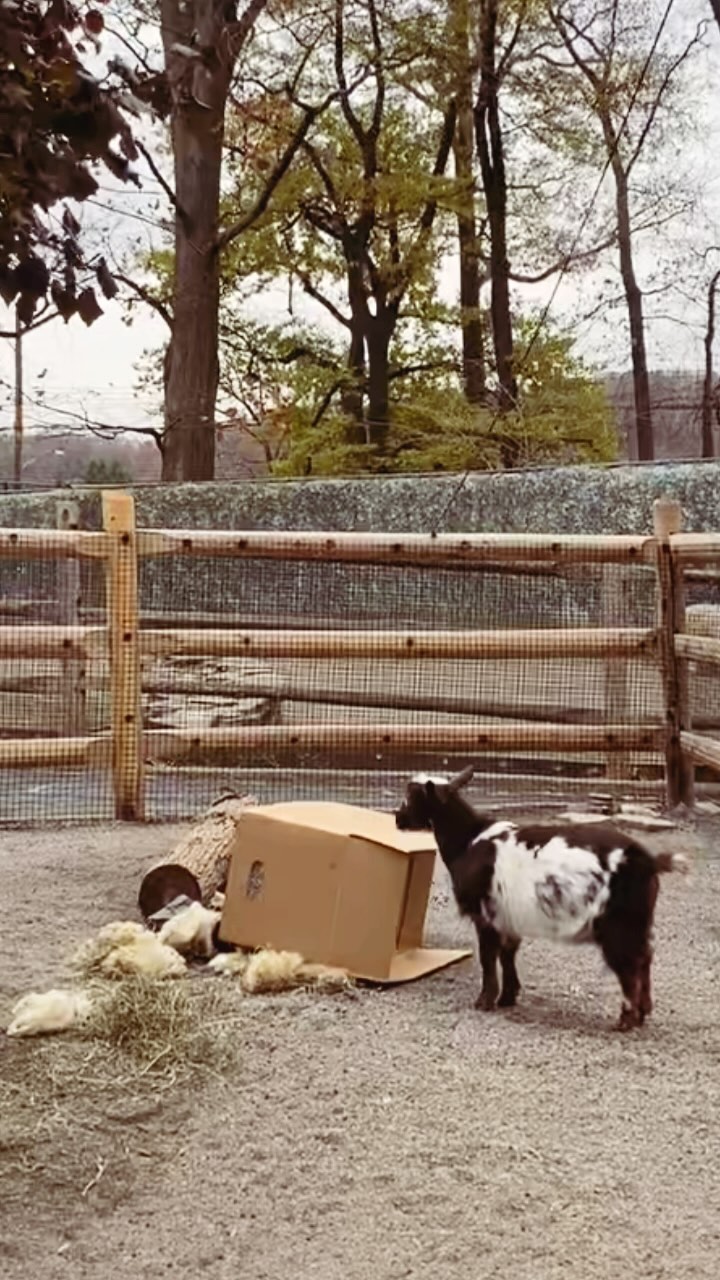- Exploration of animal behavior with a humorous twist.
- Understanding the relationship between physical space and animal interaction.
- The role of zoo environments in encouraging natural behaviors.
- Benefits of enriched habitats for animal welfare and conservation.
- Insights into the management of zoo animals and the significance of behavioral observations.
The phrase “if it fits, it sits” humorously highlights the opportunistic nature of animals adeptly using any space they find. Whether it’s a cat squeezing into a small box or a cheetah lounging on a makeshift platform, these behaviors fascinate both scientists and laypersons. However, Slink presents a novel twist: “if it strolls, it rolls.” This catchy phrase emphasizes the playful and sometimes mischievous side of animal behavior, captured so well in the vibrant world of social media. In this article, we explore how this behavior exemplifies deeper zoological truths, reveals the role of zoos in fostering these natural behaviors, and the importance of well-managed environments for animal welfare.
Animal behavior is an intricate field that studies the interaction between creatures and their environment. Behavior is influenced by numerous factors including evolutionary history, food availability, predatory threats, and, importantly, physical surroundings. Animals using tight or unusual spaces may do so for warmth, security, or simply as a response to a stimulus. The case of Slink, whose playful interaction with the cardboard box captured imaginations, demonstrates how enclosure structures can facilitate natural behaviors. By observing such tendencies, researchers can gain insights into animal intelligence, problem-solving, and adaptability. These observations feed into how zoos manage and design their enclosures to ensure animal welfare, sometimes improving our understanding of species-specific needs.
The relationship between animals and their physical environment is crucial for their well-being. Zoo habitats are designed not merely to resemble an animal’s natural environment aesthetically but to functionally allow the expression of instinctual behaviors. When an animal like Slinky D interacts with its environment with innovation—the phrase “if it strolls, it rolls” comes into play. It showcases that a well-planned enclosure can encourage physical activity and stimulate the mind, essential aspects that keep the animal healthy. Enrichment activities, such as varying the arrangement of objects or introducing puzzle feeders, advocate for environments that encourage natural behavior.
Zoos play an instrumental role in encouraging natural animal behaviors like those exhibited by Slinky D. Beyond being places of entertainment and education, zoos are conservation hubs. By providing environments that allow animals to act as they would in the wild, zoos contribute to the preservation of physical and psychological health. Actions like climbing, digging, or foraging are not just exhibitions but are vital for maintaining fitness, reducing stress, and aiding in cognitive development. It has been noted that such enriched habitats contribute significantly to the overall health and longevity of zoo inhabitants. When animals can freely explore and manipulate their environment, they often experience less frustration, thereby exhibiting more robust health and increased reproductive success.
Behavioral observations in zoo settings provide key insights into animal management strategies. Every playful head-butt or curious glance is potentially meaningful. Effective zoo management relies heavily on understanding these behaviors, as it can signal the animal’s comfort, health status, and social interactions. A detailed study of the interplay between an animal and its environment can inform modifications in habitat design, feeding schedules, and educational programming. For example, if an animal shows preference for specific types of enrichment, zookeepers may adjust their approaches to mirror these preferences to enhance the animal’s interaction with its surroundings. This approach exemplifies a commitment to continuous improvement and adaptability in zoo management practices.
This narrative links the humor observed in the phrase “if it strolls, it rolls” to more complex conservation and management goals. Wildlife conservation involves not only preserving species in the wild but also creating safe, stimulating environments within captivity that facilitate animals’ natural rhythms and behaviors. The strategic design of zoo habitats underscores these efforts. Habitats should not be static; they should evolve based on regular behavioral monitoring, informing decisions that benefit both individual and species conservation goals.
Recognizing the importance of these enriched habitats and their role in conservation emphasizes that such facilities are more than just spaces to house animals—they are dynamic venues for education, research, and preservation efforts. By encouraging visitors to observe and learn from natural interactions, zoos can leverage public interest into increased awareness and support for conservation issues. Clearly, a playful box interaction, like that of Slinky D, is not merely an amusing social media moment but a tangible example of how structured environments can significantly affect animal behavior and welfare.
Finally, the dynamic and varied use of a zoo habitat invites us to reflect on our approaches to wildlife conservation. By fostering environments that challenge and engage zoo inhabitants, zoologists and conservators contribute to grounded advances in how we perceive and practice animal stewardship. The paradigm shift from mere confinement to functional stimulus-rich spaces demonstrates our evolving understanding and respect for animal intelligence and welfare. In essence, catching a glimpse of life through a playful moment captured on Instagram links casual observation to scientific inquiry, showcasing how the seemingly mundane observations can yield profound insights into animal behavior and zoo management.
*****
Source Description
We’ve all heard the phrase “if it fits, it sits” but Slink is here to show off the new tagline “if it strolls, it rolls” 📦🐐
(Disclaimer: Slinky D was perfectly fine, however, that box got a good head-butt after)


